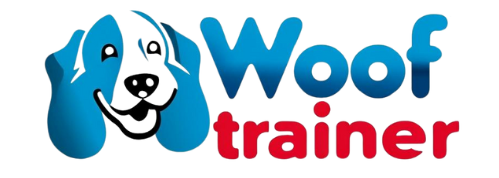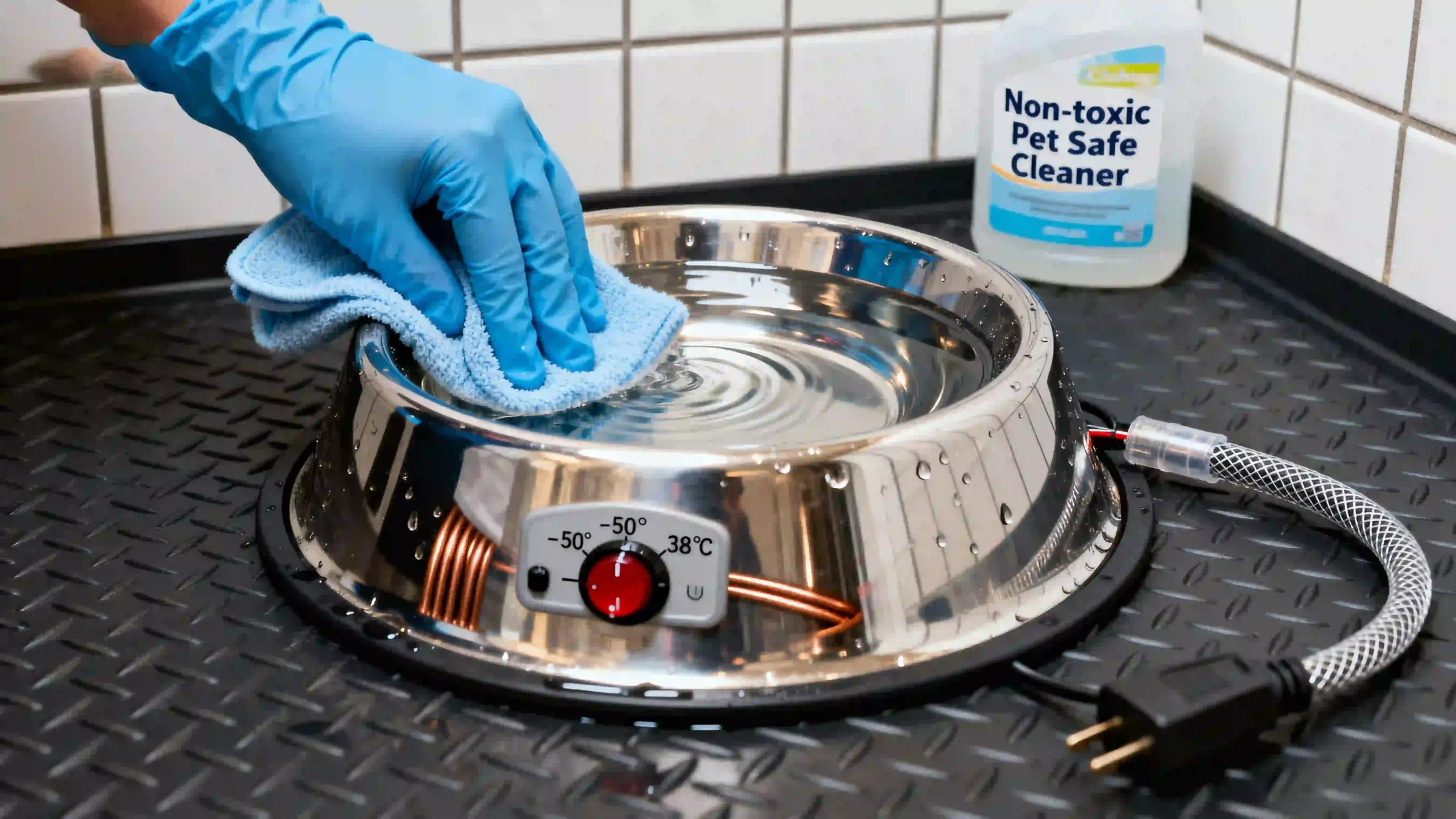Running a kennel through long, cold winters means you can’t afford downtime in hydration systems. Heated dog bowl maintenance isn’t optional—it’s central to kennel operations, dog health, and staff efficiency. Here’s your guide to keeping heavy-duty bowls safe, clean, and reliable in a busy kennel.
Why Maintenance Matters in Kennel Operations
You might assume once installed; heated dog bowls will “just work.” But without regular maintenance, you get:
- Unexpected failures (freezing even though bowl is “heated”)
- Health risks from bacteria or biofilm buildup
- Safety hazards (exposed cords, overheating, water contacting electrical parts)
- Extra labor as staff scramble to compensate
Proper maintenance ensures safe dog bowl usage, lower long-term cost, and more reliable hydration for all your dogs.
Daily Maintenance Checklist
1.Visual Inspection First Thing in the Morning
- Check water is liquid, no ice crust or slush on top.
- Ensure heater is on (or thermostat is responsive).
- Examine cords, plugs, base for damage, moisture, or chewing marks.
2.Fresh Water & Debris Removal
- Drain any water that has been dirtied by food, paws, hair. Refill with fresh, clean water.
- Scoop out debris; slush or ice should be cleared so heating element works efficiently.
3.Safe Dog Bowl Cleaning
- Wipe bowl edges, rim, and interior with warm soapy water; use a clean brush or cloth.
- Rinse thoroughly to remove soap residue (dogs are sensitive to tastes/odors).
- Dry surfaces or leave to drip-dry if permitted by design.
Weekly & Deep Cleaning Protocol
- Once per week, perform a deep clean: remove bowl (if removable), clean thoroughly including underneath, base area, thermostat housing. For bowls made of stainless steel, you can use kitchen disinfectants; for plastics, ensure they’re cold-rated and chemical-safe.
- Disinfect using pet-safe disinfectants. Hot water + soap followed by a disinfectant soak reduces biofilm, bacteria such as E. coli or Salmonella. Research indicates bowls are one of the “germiest” items in pet areas if not cleaned regularly.
- Inspect seals, sensor connections, and any exposed heating components.
Monthly / Seasonal Maintenance
- Full inspection of electrical components: cords, plug housings, thermostat, control panels. Cold causes insulation to crack; moisture can seep in.
- Check heating performance: measure how long the heater runs (in very cold temps) to see if performance is dropping → could indicate failing element or insulation loss.
- Replace worn or damaged parts: if steel bowls get deep scratches, cracks, or if plastic warps, replace them. Damaged surfaces can harbor bacteria and compromise heat distribution.
- Winter preparedness: ensure bowls are weather-protected, outlets are GFCI, and you have backup units in case a bank of bowls fails.
Cleaning Tips Specific to Heated Bowls
- Use non-abrasive tools for interior so you don’t damage stainless steel finish or plastic lining.
- Avoid harsh chemicals that can corrode metal or degrade sensors. Always rinse off completely.
- If using dishwasher: only approved bowls, top rack if lightweight, use heat-sanitize/dry cycles to kill germs. Many kennel supply experts recommend stainless steel bowls for dishwasher safety.
- For frost or ice around bases, use warm water first (not boiling), then gently scrape—don’t damage housing or thermostat.
Integration of Maintenance into Workflow
To keep things efficient in busy kennels:
- Assign daily tasks to specific staff: e.g. “Bowl check” first shift, “Deep clean” mid-week.
- Use logs: record time, date, which bowls were cleaned, any issues found. This helps spot patterns (e.g. one bowl always freezes → maybe placement is exposed).
- Stock spares: always have extra bowls, cords, heating elements on hand. Waiting for parts in deep winter is a risk.
- Train staff in Safety Guidelines for Electric Heated Dog Bowls in Boarding Facilities: those rules often include how to inspect, clean, and repair safely.
Energy Efficiency & Cost Control
- A lot of energy is wasted via ice buildup or inefficient heating. When bowls are clean and well maintained, they react better: thermostat cycles less frequently, heater doesn’t run full blast continuously.
- Measure your electrical draw (watts × hours) to see which bowls are expensive, and possibly replace them with more efficient commercial-grade bowls.
- Also relevant is Do Heated Dog Bowls Consume Too Much Energy—studies show that well-insulated, well-maintained bowls consume far less than cheap poorly built ones.
Long-Term Health & Kennel Reputation
- Puppies, senior dogs, or pregnant mothers suffer first when hydration is inconsistent. Clean, functioning heated bowls protect dog health in winter.
- Ugly or poorly maintained bowls look bad to clients. In boarding or breeding business, perceived cleanliness and safety influence trust and reputation.
- Regular maintenance reduces illness risk, lowers veterinary bills, improves overall kennel operations.
Common Pitfalls & How to Avoid Them
| Pitfall | Prevention |
|---|---|
| Neglecting underside of bowl / thermostat area | Always remove bowl from base weekly and clean beneath thermostat, dry fully. |
| Letting water freeze slightly then refilling over frozen crust | Ensure bowls stay filled enough so full contact with heating plate or bottom; avoid letting heat be interrupted for long. |
| Using wrong cleaning chemicals | Use pet-safe disinfectants; avoid bleach or harsh acids unless diluted and thoroughly rinsed. |
| Staff not aware of safe usage | Regular training; post cleaning/maintenance checklist; include items from Heated Dog Bowls: The Complete Guide to Keeping Pets Hydrated in Winter for reference. |
[PDF] Download Maintenance Checklist.
FAQs
-
How often should heated dog bowls in a kennel be cleaned?
Daily for water changes and debris removal; weekly deep cleans; monthly inspections of electrical components and performance. -
What cleaning agents are safe to use?
Mild dish soap + warm water for daily clean; pet-safe disinfectants weekly; avoid harsh chemicals on seals or sensor housings; always rinse completely. -
Can stainless steel bowls be washed in the dishwasher?
Yes—if manufacturer approves. Use heat-sanitize or high-temperature dry cycle. Stainless steel is ideal for durability and sanitation. -
What signs indicate a bowl needs repair or replacement?
Cracks, deep scratches, exposed wires or insulation damage, thermostat failing (water freezing or overheating), base tipped or unstable. -
Is there a risk of bacteria from warm water in heated bowls?
Yes—warm water + debris + slow cleaning = biofilm buildup. Regular cleaning and disinfection reduce that risk significantly. AKC and other veterinary sources emphasize daily washing. -
How should cords be maintained?
Keep cords dry, elevated when possible; inspect for cracks or chew damage; use weatherproof connections; avoid letting cords sit in standing water or snow. -
Does maintaining bowls well reduce energy costs?
Yes. A clean, well-insulated bowl with proper thermostat cycles less. Dirty or blocked heater surfaces, ice buildup, poor placement (wind, exposure) force heaters to work harder, wasting electricity. -
What schedule is recommended for inspections and record-keeping?
Daily checks (morning), weekly logs of deep cleans, monthly full inspection of electrical parts, and seasonal prep before winter starts. Record date, bowl ID, issues, repairs made.


